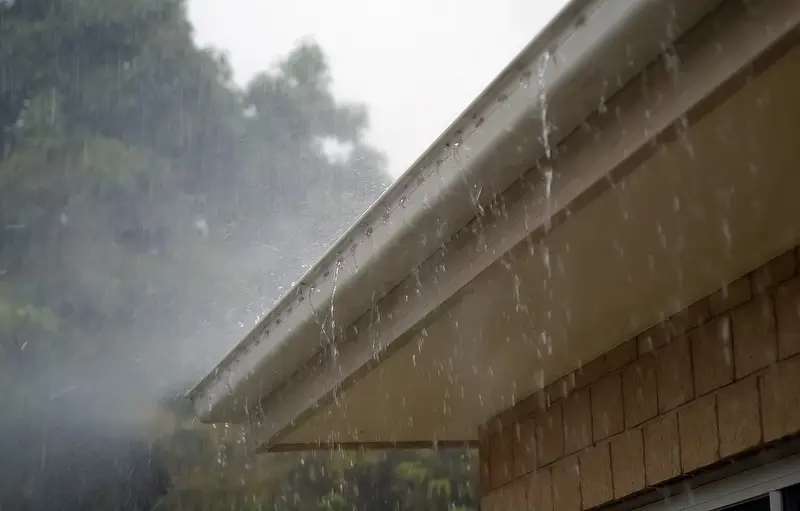Table of Contents
Your roof is one of the most essential protective barriers for your home, sheltering you from harsh weather, pests, and temperature extremes. But it’s also one of the most vulnerable parts of your home, exposed to rain, wind, snow, and sun daily. Over time, these elements can lead to wear and tear, and if left unchecked, minor roofing issues can escalate into significant—and costly—problems. By learning to identify common roofing problems early, you can save money, maintain your home’s structural integrity, and ensure a safer, more comfortable living environment. This article covers some of the most frequent roofing issues and how to spot them before they cause serious damage.
1. Missing or Damaged Shingles
Missing or damaged shingles are one of the earliest signs of a roof in need of attention. Shingles protect the underlying layers of your roof from moisture and UV damage, but over time, they can become cracked, curled, or completely dislodged due to weather exposure. While it’s possible to spot shingle issues with a visual inspection, handling repairs yourself may be risky. In cases of extensive damage or if shingles are scattered across large sections, it’s best to call in professionals. A reputable roofing company will have the expertise to safely replace shingles and inspect for underlying issues, such as water damage, that might go unnoticed. Ignoring shingle problems can lead to leaks and further structural concerns, making prompt repair essential for a well-maintained roof.
2. Water Stains on Ceilings or Walls
One of the clearest indicators of a roofing problem is the appearance of water stains on your ceiling or walls. These stains are often yellowish-brown and signal that water has infiltrated your roof and seeped into your home’s interior. If left unaddressed, this moisture can cause mold growth, damage insulation, and weaken your home’s structural framework. If you notice any water stains, especially after heavy rainfall, it’s important to investigate the cause immediately. While it may not always stem from the roof, the possibility warrants a thorough check by a roofing professional to avoid potential damage.
3. Granules in the Gutter
Shingles are coated with small granules that add an extra layer of protection to your roof. Over time, these granules can become loose and find their way into your gutters. While a minimal amount of granules in the gutter is normal, an excessive buildup often signals that your shingles are nearing the end of their lifespan. The loss of granules can leave shingles exposed to UV rays and other weather elements, accelerating their deterioration. Regularly check your gutters for granule accumulation, and if you notice a significant amount, it may be time to consider a roof inspection or even replacement.
4. Flashing Issues Around Chimneys and Vents
Flashing is a metal material used around roof penetrations, like chimneys, vents, and skylights, to prevent water from seeping in around these areas. When flashing is damaged, improperly installed, or becomes loose over time, it can leave your roof vulnerable to water leaks. Common signs of flashing issues include rusted or cracked metal and visible gaps around the edges. Regularly inspecting flashing and addressing any problems immediately can prevent water from infiltrating and causing further damage.
5. Sagging Areas on the Roof
A sagging roof is a serious structural issue that requires immediate attention. Sagging can occur due to several factors, such as water damage, an accumulation of heavy snow, or weakening of the roof’s support structure. Walk around your property and examine the roof from different angles, looking for any dips, curves, or sagging sections. While slight settling may be normal, visible dips often indicate that water has seeped into the roof’s structure, causing it to weaken. Early intervention can prevent a complete collapse and help you avoid costly structural repairs.
6. Mold, Mildew, or Algae Growth
In damp or humid climates, mold, mildew, and algae growth on a roof can be common problems. These organisms thrive in moist environments, and their presence on your roof usually indicates that moisture is lingering in areas it shouldn’t. Mold, mildew, and algae not only affect the appearance of your roof but can also lead to decay and rot over time, compromising the integrity of your roofing materials. Regular cleaning and routine inspections are crucial to prevent these growths from spreading. If the problem persists, consult with a roofing professional to identify possible causes and solutions.
7. Clogged Gutters and Downspouts

Gutters and downspouts play a vital role in directing water away from your roof and home’s foundation. When they become clogged with leaves, debris, or shingle granules, water can pool on the roof’s edge, leading to water damage and even mold growth. This pooled water can seep under shingles, causing rot and weakening your roof’s structure. Cleaning gutters at least twice a year and after major storms can help you avoid these problems. Additionally, consider installing gutter guards to reduce the need for frequent cleanings.
Identifying common roofing problems before they become significant issues can save you time, money, and stress. A well-maintained roof not only adds value to your home but also protects its structural integrity, helping to keep your living environment safe and comfortable. Regular roof inspections, at least twice a year and after major storms, can help you catch small issues early before they escalate. By addressing damaged shingles, clogged gutters, and other minor problems promptly, you can extend the lifespan of your roof and avoid costly repairs. If you’re unsure about any aspect of your roof’s condition, it’s always wise to consult a qualified roofing professional for guidance and peace of mind.
Want to explore something different? Spitalfields as a Business Hub: How Dining and Entertainment Attracts Professionals

